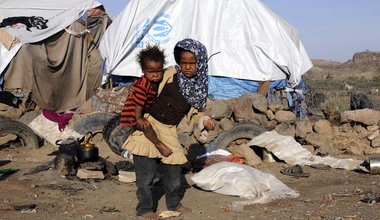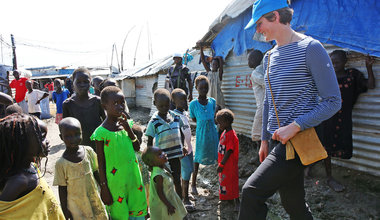New UN centre boosts use of real-time data to better respond to humanitarian crises
 With more than 135 million crisis-affected people across the globe in need of humanitarian assistance, the United Nations today opened a data centre that will give aid organizations and relief workers access to vital information they need to make responsible and informed decisions.
With more than 135 million crisis-affected people across the globe in need of humanitarian assistance, the United Nations today opened a data centre that will give aid organizations and relief workers access to vital information they need to make responsible and informed decisions.
“Accurate data is the lifeblood of good policy and decision-making. Obtaining it, and sharing it across hundreds of organizations, in the middle of a humanitarian emergency, is complicated and time-consuming – but it is absolutely crucial,” said UN Secretary-General António Guterres, speaking at the opening of the Centre for Humanitarian Data in The Hague in the Netherlands.
“This Centre will make that difficult task far easier, speeding up the flow of data from collection to application,” he added.
Managed by the UN Office for the Coordination of Humanitarian Affairs (OCHA), the Centre is focused on four key areas: data services, to make data accessible; data policy, to ensure data is used responsibly; data literacy, to improve how data is used; and network engagement, to ensure human-centred approach.
Accurate data is the lifeblood of good policy and decision-makingSecretary-General António Guterres
One of the primary activities of the Centre is managing the data-sharing platform, Humanitarian Data Exchange (HDX), and its data standard, the Humanitarian Exchange Language (HXL).
The goal of the HDX is to make humanitarian data easy to find and use for analysis. The HXL is based on spreadsheet formats (such as Excel or Comma-Separated-Values) and adds hashtags with logical information to allow software to validate, clean, merge and analyse data more easily.
“The idea of ‘a simple standard for messy data’ will appeal to anyone like me, who has worked with humanitarian statistics and not always very able to understand them,” expressed Mr. Guterres, highlighting the potential of the application of technologies on the ground.
Recent examples of HDX deployment include the response to the 2015 earthquakes in Nepal, where it provided visualizations to illustrate whether humanitarian programmes were meeting people’s needs. The exercise resulted in significant changes to the humanitarian response.
It was also used in preparation efforts during the recent hurricanes in the Caribbean region as well as in the response to the crisis caused by the arrival of over 600,000 Rohingya refugees from Myanmar into Bangladesh.
In his remarks, the UN chief also underlined the importance of keeping data secure and protected.
“Coming from UNHCR, I know exactly the value of sensitive data to be protected for the protection of people,” he said, noting that the Centre will make the work of humanitarians around the world easier.
The Centre is one of the major initiatives of the Agenda for Humanity, unveiled ahead of the World Humanitarian Summit held in 2016 in Turkey.
 UN
UN






